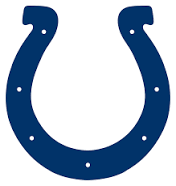LA Rams
- Paul Grange

- Sep 23
- 3 min read

The Los Angeles Rams are one of the NFL’s great travellers. They began in Cleveland in 1936, when owner Homer Marshman named the team after the Fordham Rams, a powerhouse New York college program of the era. Fordham’s “Seven Blocks of Granite” offensive line, which included Vince Lombardi, was famous nationwide. Marshman admired their grit and liked that “Rams” was short, memorable, and perfect for newspaper headlines. There wasn’t a deep economic link — it was more about brand recognition and toughness — but the name stuck, and it became one of the longest-running identities in American football.
In 1946, the Rams moved to Los Angeles, the first NFL franchise on the West Coast. It was a bold, ambitious and ingenious step —professional football was now linked to the glamour of Hollywood, the sprawl of a booming postwar city, and the vast Los Angeles Memorial Coliseum, which became their home. The Coliseum was significant: a civic monument built for the 1932 Olympics, symbolising LA’s emergence as a world city. For the Rams, it became their stage.
And on that stage, they made history. In order to play at the publicly owned Coliseum, the team was pressed to integrate. That year the Rams signed Kenny Washington and Woody Strode, breaking the NFL’s colour barrier a full year before Jackie Robinson more famously integrated Major League Baseball. Later joined by players like Marion Motley and Bill Willis in Cleveland, Washington and Strode helped change the face of the league. For Los Angeles, a city defined by migration and diversity, it was a statement: football in LA would look like LA itself.
By the 1980s, the Rams shifted to Anaheim, chasing suburban fans, but in 1995 they moved to St. Louis. It was in the Midwest that they reached their highest peak. St. Louis gave them loyal blue-collar support, and the franchise rewarded the city with the “Greatest Show on Turf.” Quarterback Kurt Warner – who embodies one the greatest stories in sports became their hero. A former grocery store stocker he became the symbol of an underdog story, leading an explosive offense with Marshall Faulk, Isaac Bruce, and Torry Holt. Together they won Super Bowl XXXIV in 2000, beating the Titans in dramatic fashion with “The Tackle” at the one-yard line. They returned to the Super Bowl two years later but lost to Tom Brady’s Patriots in a game that reshaped NFL history and set Brady’s bunch off on their own all conquering run.
The economies of their two homes shaped their fanbases. St. Louis, the “Gateway to the West,” (as symbolised by the huge 192m Gateway Arch monument that dominates the skyline) thrived on river trade, brewing, and manufacturing coming up and down the Mississippi – linking North with South – and a launchpad for Westward conquest – started initially by the famous explorations of Lewis and Clark which set off from nearby the city in the 1804. By the 1990s, it was a proud but economically bruised city, and its Rams fans mirrored that: blue-collar, tight-knit, fiercely loyal. By contrast, Los Angeles grew from missions and ranches into a giant of oil, aerospace, Hollywood, global trade, and now tech. LA fandom reflected the city’s diversity and glamour — larger, more fluid, sometimes accused of being fair-weather, but steeped in star power and spectacle.
In 2016, the Rams returned to Los Angeles, and by 2020 they were playing in SoFi Stadium, a $5 billion futuristic arena in Inglewood. SoFi isn’t just a stadium; it’s the centrepiece of Hollywood Park, a 300-acre development of entertainment, retail, and housing. With its translucent roof, natural ventilation, and record-breaking “Infinity Screen,” it is the NFL’s showpiece. It hosted Super Bowl LVI, will host 2026 FIFA World Cup matches, and will star in the 2028 Olympics. In 2022, the Rams lifted the Lombardi at home in SoFi, powered by Matthew Stafford, Cooper Kupp, and Aaron Donald — a moment that tied their modern success back to their legacy of spectacle.
The Los Angeles Rams are more than a football team. They are a franchise that has carried the grit of Cleveland, the glamour and diversity of LA, and the loyalty of St. Louis. They integrated the NFL in 1946, lit up the league in 2000 with the Greatest Show on Turf, and now shine again from the NFL’s most dazzling stage.







Comments